Last year when Saris/CycleOps came out with their ANT+ enabled Joule, many wondered how it would stack up against the competition. Would a non-GPS enabled device still be able to compete in an increasingly GPS dominated world? And how would it differentiate itself from the competition?
Well, I set out to find out.
The folks at CycleOps sent me both a Joule and PowerTap to try out for a few months. Though instead of sending just a bare PowerTap hub, they actually sent along their entire wheelset that includes the PowerTap hub (the actual power meter) already built in. This is a relatively new offering directly from them aimed at a streamlined PowerTap experience.
Of course, the bulk of my testing would be aimed at the Joule and how it interacts with the PowerTap – as well as how it plays with other power meters on the market. After all – one of the strengths of using ANT+ is interoperability with some 300+ companies that make ANT+ enabled devices.
If you haven’t read my product reviews before you’ll find them fairly in depth. Consider them part review…and part manual. Many folks use them as a reference guide after they’ve bought the product. Additionally, in the case of the products provided by CycleOps, the wheelset (including PowerTap) goes back to them in the next few days – though they don’t need me to send the Joule back…so that will probably work it’s way into the giveaway scene at some point… 😉
So, without further ado – let’s dive into it!
Unboxing:
Part I: Joule-
Once you’re ready to get everything all unboxed, you’ll have a multi-part unpacking effort. The first piece is the Joule itself. This is of course the brain of the operation as the actual cycling computer. Should you already have a power meter (PowerTap or otherwise), then you’ll only be unpacking this first piece. Here’s what the box looks like prior to me tearing it open:
Once you open it up you’ll find the box is actually rather simplistic (a refreshing change) – with the Joule simply there looking up at you:
Inside the box you’ll find an assortment of components that help you to better use the Joule and power in general.
First up is the Joule itself of course:
Then the impressively thick Joule printed manual:
Then the ANT+ enabled HR strap (note, if you already have an ANT+ enabled HR strap – this is simply duplicate):
A standard mini-USB cable:
The Joule mounting kit and zip ties:
And lastly a few CD’s/DVD’s that include power overviews and the PowerAgent software (though, I recommend you grab the latest version online):
Finally, as a brief comparison in size, here’s the three most popular other power meter head units out there today – the Edge 500, Edge 800, and the older PowerTap Cervo – Little Yellow Computer (LYC):
With that, let’s move onto the PowerTap hub and wheels.
Part II: PowerTap Wheels-
The fully integrated PowerTap wheels are somewhat new to CycleOps. Essentially the goal here is to offer you as the consumer a solution that doesn’t require you to go to a bike shop once it arrives on your doorstep. In this case, they sent me to review a fully configure wheelset, with the PowerTap hub already built into the wheelset. If you buy just a PowerTap hub to integrate into your own wheelset, then the unboxing process would be slightly different. But…onto the wheels we go!
You’ll note that each wheel is boxed separately.
Within each box is not only the wheel itself, but also a wheel bag for each wheel – a nice touch. However, the wheels do not come with tires – so you’ll need to pick those up somewhere along the way. This is typical of most wheelsets in the cycling world.
These particular wheels are built by Enve (used to be known as Edge Composites), and are the Enve 45’s. These ones aren’t shipping quite yet and are still a few months away. Today if you pickup an integrated wheelset directly from CycleOps it’s based on the DT Swiss rims. Going forward in the next month they’ll also be offering wheels based on the Velocity A23’s.
As noted, the PowerTap hub itself is built into the wheelset. Normally if you just bought a PowerTap hub you’d have to get it installed by a wheel builder or bike shop into a compatible wheelset of your choice. In this case, it’s already built in:
The PowerTap hub is fully wireless using ANT+, which means it’s compatible with any ANT+ enabled device that supports power meters. This includes a wide range of devices from CycleOp’s own Joule head unit, to Garmin, Timex and phone based devices.
Now that we’ve got everything unboxed – it’s time to get it installed.
Installation:
Installation is comprised of two parts – installing the Joule onto your bike, and putting on the PowerTap wheelset on your bike. Both pieces are dead simple though.
For the Joule you’ll go ahead and breakout the mount kit, which may require a small Phillips head screwdriver to get setup depending on if you mount to your aerobars or handlebars – as the channel on the back of the mount can swap both ways:
I suggest doing a practice run with which way it’ll need to mount…prior to zip-tieing it to your bike. Once you’ve got it all situated directionally, then you’ll want to go ahead and apply the zip ties.
And with that…installation is complete. Very tough…I know.
On the wheelset side – you simply swap out your wheel set for theirs. You’ll want to remember to buy tires and tubes for it though. And note that because of the longer valve stem you’ll need to get slightly longer length valve tubes than you normally would.
Once that’s all set, then they should look nice and pretty on your bike:
First Run and Configuration:
Now that we’ve got it installed, all we need to do is simply turn it on. From here you’ll want to first get the various ANT+ sensors that you have hooked up. In the case of the PowerTap you’ll pair it as a Power Meter, but it’ll actually provide you with Power, Speed and Cadence. It knows Power and Speed based on measurements via reed switches in the hub, but with cadence it actually determines that mathematically.
Like every other ANT+ power meter head unit on the market, you’re only able to pair one power meter (or one cadence sensor, or one speed sensor) at a time. Noah’s Ark this is not. But that’s totally fine and also the norm amongst head units.
It does allow you to save multiple sensors though – which is a neat perk if you have multiple bikes, or if your like me and have a few ANT+ HR straps lying around, it allows me to just use any one handy and simply activate it.
In addition to setting up the sensors you’ll want to go ahead and enter your athlete information. You can do this either on the device, or on your computer and have it sent to the device. I’d highly recommend the computer approach, but understand that because the focus of the Joule is providing a highly informative on-device experience, you see much more capabilities locally than many of the competitive devices.
Once you’ve got the basics of the device configured you can go ahead and configure areas like display settings – increasing the brightness and contrast levels for example:
It’s really rather astounding how bright the Joule backlight can get. No issues viewing any of the numbers in the dark should you be relegated to night-time workouts (or just want to save money on lights in your house).
It’s in the settings area that you can also configure power and heart rate zones as well:
Now that we’ve got all the basics configured, let’s head into normal use. As for the PowerTap hub itself – there’s nothing else to do or configure here…it just works.
Day to Day Use:
The most important thing to know about the Joule is that it’s all about the on-device informational experience (as opposed to focusing just on data capture and then later on-computer analysis). Unlike the majority of other power meters compatible head units out there, this one focuses on power meter usage as its first objective. Of course, it records all this data as well, allowing you to then later drill into the data through either the included software suite or any 3rd party suite.
Overview of user interface and design:
The Joule cycling computer uses a unique design that allows you to display up to six primary fields, with two additional related secondary fields displayed along the bottom. To show what I mean, check out the below photo. In this case, one of the altitude metrics is shown within the primary fields, and the 2nd and 3rd related metrics are shown along the bottom:
This is actually a really easy and cool way to allow you to quickly get fare more detailed information than could realistically fit on a single screen. Instead of having to change data screens to display more information, you simply use the little joystick to highlight the primary topic area, and it’ll automatically show you the two related fields of your choice below. Unique…and super simple.
(Above, you can see I have Watts selected in the upper left corner, while along the button I’ve got Av Watts and Mx Watts for that interval shown)
The Joule navigation is compressed of essentially three buttons: Mode, Interval and the Joystick.
1) The mode button iterates through screens on the Joule itself – kinda like pressing a ‘Next’ button. And in the case of the settings screens, it’s used as a back button.
2) The interval button is primarily used to create a new interval – or lap. For users of Garmin devices, this is a bit confusing as first, but after your first workout it all makes sense. Instead of pressing ‘Lap’ like you would on other devices, you simply press ‘Interval’ to demark an interval. At the top of the screen it’ll go ahead and display which interval number (aka lap number) you’re on.
3) The joystick allows you to maneuver around the display between the different data fields, as well as many of the historical pages (controlling up/down). In addition to left/right/up/down, the joystick depresses in and is used as an ‘Enter’ button.
Any of the three can be pressed to turn the unit on from it’s power saving state (it automatically shuts off after a few minutes, but you can configure that in the settings).
Configuring Display Fields:
As noted above the Joule includes the capability to customize screens to your liking. You can choose between 3 and 6 data fields to display as primary fields. If you choose three fields, then the top field takes up approximately half the screen – making it super big and easy to read.
Regardless of how many fields you choose, you can easily change fields simply by pressing and holding the joystick down. If you hold it down for a brief moment, it’ll change the fields in the primary area with those in the secondary area (lower fields). If you hold it down for a longer time period it’ll slowly iterate through just about every field under the sun – allowing you to choose exactly which one you want.
While the field selection system is a bit clunky compared to some devices, you don’t change fields all that much once you have it setup – so it’s not too much of a big deal in the grand scheme of things.
Smoothing and zero inclusion options:
The Joule includes many little options that target the power meter world and help to simply either make life easier on the bike – or to standardize data off the bike. Here’s the quick rundown:
Power Smoothing: You can choose to smooth power at 1s (seconds), 2s, 3s, 5s, 10s, or 30s. Note this doesn’t affect recorded data rates (which are 1s) – but only what is displayed on the unit. I generally prefer 3s or 5s.
Power Zero Option: You can choose to include zero’s in your power file, or ignore them. This would be cases where you’re coasting and don’t want that to ‘bring down’ your overall power numbers. I keep this to enabled, and choose to include zero’s as to not artificially inflate my power numbers.
Cadence Smoothing: Same as above power smoothing options – but with cadence instead.
Speed Smoothing: Same as above – but with speed.
Speed with zero’s: This would remove zero’s from your speed, like the power zero option above.
As you can see – plenty of options to get and view the data how you like it…which is just how I like it!
Power Meter data fields:
As I’ve noted elsewhere – the Joule is about power…and the Joule doesn’t disappoint here. But instead of writing out all the fields manually – I found this nifty little table which does the same thing. After all, no need to re-invent the wheel.
As you can see, there’s tons of options both for power and non-power fields. For those that train by power scores exclusively, you’ll note the inclusion of TSS, NP and IF – and area that’s not available in many competitive devices.
Device History Displays
The Joule has a huge amount of on-device data displays and historical information. Part of the goal was to allow folks to be able to simply not have to download their rides all the time to get access to detailed ride information. There’s just a ton of information you can iterate through. For example, historical summary information:
You’ll notice it shows that specific day’s ride – as well as the past 2 weeks. You can simply tap the center joystick though to change it to any number of time parameters (i.e. months) though.
You can then go into much of the power detail as well, from Average Watts to exactly how many minutes you spent at zero watts (coasting):
Really cool stuff.
One of the other fun ones is the Peak Power reports. This report allows you to show various peak power numbers over the course of a given ride, or single rides.
It was in these reports though that I noticed some rides weren’t being correctly totaled though into the longer 2 week+ columns, as some rides I had with higher power numbers didn’t seem to show up in the Peak Power numbers later on, despite showing up here. A minor bug of course, and not something I’d ultimately base a product purchase decision on. In general I find the Joule to be incredibly bug free in comparison to competitive offerings.
Overall, the power history options here are pretty in depth and really allow you to sit somewhere with just the Joule alone and get a pretty good understanding of your recent and long term power history.
Data Storage and Card:
The device itself includes 4MB of storage – which is about 26 hours of ride files, but that can be expanded with a MicroSD card. The nice part here is the MicroSD card slot is fully inside the unit’s back door – allowing you to ensure it stays dry in the watertight compartment – regardless of the conditions outside.
I didn’t really find a need though to purchase a separate card (which of course, are dirt cheap on places like Amazon or your local computer outlet) – but if you need the extra on-device data space…it’s easy to expand.
Weather Resistance:
We’re trained as consumer electronics users to know that anytime we see an exposed USB port you should be worrying about water. And in the case of devices like your cellphone – that’s generally true. But this ain’t no cell phone.
Nope, this is a fully weather sealed device – with an internally sealed USB port. To prove this you may remember my recent dunking of the the Joule in the bathtub (along with some of the cycling Garmin’s). For those who missed it and the video, check out the full post here.
The Joule is weatherproofed to IPX7 – like most other ANT+ devices, which means it can sustain 30 minutes in water 1 meter deep. Of course, it can sustain driving rain for quite a bit longer – basically just about forever in my experience. It’s sustained water pressure that IPX ultimately measures, not merely just water exposure (where it has no issues).
In my testing the device performed flawlessly, without any issues resulting from the bathtub experience two months ago – or any rain and snow since then.
Additionally, using the device with gloves is relatively easy. Though the joystick is a touch bit harder to navigate than the buttons – but eventually you get the hang of it.
Downloading to computer:
Once you complete your ride, you’ve just begun to tap into the potential of the Joule. After all, now you get to begin the analysis that can keep you pouring over data files for hours (err…days) on end.
But, before we get to that we’ve first got to get the data off the device. Luckily, that part is easy. First, you simply plug it in via USB to your computer (Mac or PC).
Then you turn it on if not already on. From there, you’ll go ahead and open up the included PowerAgent software (which we’ll cover in more detail in a second) and select to download the data:
Once that starts, it’ll take a few seconds to download everything. But before ya know it…it’s all there – ready for you to choose which files you want to save. Additionally, this is the place where you can choose to share you workout with a slew of different services.
Now that we’ve got the data onto the computer, let’s start playing with it.
Software Options:
The Joule includes the CycleOps created software suite called “PowerAgent”. This software suite is their primary way to download and manage all the power files you create. The software is free, and can be downloaded/updated whenever you need to here.
PowerAgent (Included):
Once you’ve got it all installed you’ll go ahead and get data files from your Joule per the above section. After that, it’s time to start analyzin’. The main screen will show your ride summary and detailed information tabs:
You can drill down into any specific interval that you created during the ride itself.
But you can also create intervals here on the fly to analyze. For example, I just created a quick random chunk below – and yes, even name it that as I did below:
You’ll find many of the same historical options that were on the device also present in the software. For example, in the lower portion of the below screenshot you can see the various Peak Power Numbers for that specific ride:
In addition to analyzing your rides, the software allows you to both update and configure your Joule devices. For example, should firmware updates become available, you can easily download them to your device:
It only takes a moment to update the firmware – which is pretty important btw when you first get your Joule. There’s been a number of additions over the past 6-9 months – including key enhancements like adding support for a number of ANT+ sensor types.
Speaking of ANT+ accessories, you can also actually create the pairing information here – if you happen to know the ANT+ ID. This is a fairly geeky…but really cool feature.
As you can see here, I can add other ANT+ devices outside of those made by CycleOps, such as another ANT+ Power Meter.
All in all, the base software suite is pretty impressive for vendor supplied software that’s able to do both single-ride analysis as well as basic historical information. Though I find that for more detailed long term historical trending and reporting it lacks a bit. Also, from a triathletes standpoint it only covers one sport – so you’ll need to find another application to cover all three sports and logging. That said, CycleOps is a cycling company – so the focus is logically quite cycle-focused.
Training Peaks (3rd party):
In addition to the included PowerAgent software, you can also use a slew of third party options. For me, I ultimately upload everything into Training Peaks (TP) – merely because that’s how I communicate my workouts with a coach. In the case of TP, I can either use the PowerAgent software included and simply tell it to upload to Training Peaks, or I can go ahead and have the Training Peaks device agent pull the data files directly from the Joule:
Once I’ve got the device files uploaded to Training Peaks (the website) I can analyze them till the cows come home.
TP has both a free and premium version available. In my case, I get the premium version via my coach. I think for users of power meters, you’ll actually want to spring for the premium option should you need an online solution. Though, if you don’t need an online solution I find the PowerAgent software is pretty comprehensive and really fits the bill for most folks.
Additionally, Training Peaks is part of Peaksware, which is the same company that owns the long-used WKO+ software suite – which really specializes in power. But given virtually all of the WKO+ functionality is being ported to TrainingPeaks.com, I feel that if you have to invest your cash somewhere – TP is the place to do it.
Golden Cheetah:
In addition to Training Peaks and PowerAgent, you can also choose the free and open source Golden Cheetah application. This application is worked on by a community of folks dedicated to finding ways to do some pretty in depth analysis of your rides. Golden Cheetah can open files on your Joule directly, without the need for any conversion.
Golden Cheetah allows you to drill into each lap individually, or the ride as a whole.
They’re also doing quite a bit of interesting work around aerodynamics within the AeroLab area – well worth the look. Outside of the numbers, Golden Cheetah will surely keep those picture-focused folks busy looking at all the pretty colors.
It’s alright, I understand…you’re cyclists…it’s all about pretty colors (how else do you explain the Team Liquigas kit?).
–
Ancillary Software Note: While I normally also mention Sport Tracks, in this case ST doesn’t include native upload capabilities from the Joule. Though there are workouts, and you can certainly export from PowerAgent a CSV file which Sport Tracks can read, today it does not support directly importing the native .BIN files.
Comparison Chart:
| Function/Feature | CycleOps Joule 2.0 (Original) | Garmin Forerunner 965 | Garmin Epix Pro Series | Garmin Fenix 7 Pro Series | Suunto 9 Peak Pro | ||||||||||||||||||||||||||||||||||||||||||
|---|---|---|---|---|---|---|---|---|---|---|---|---|---|---|---|---|---|---|---|---|---|---|---|---|---|---|---|---|---|---|---|---|---|---|---|---|---|---|---|---|---|---|---|---|---|---|---|
| Copyright DC Rainmaker - Updated March 24th, 2024 @ 12:39 pm New Window | |||||||||||||||||||||||||||||||||||||||||||||||
| Price | $450.00 | $599 | $899/$999 | $799+ | $549 | ||||||||||||||||||||||||||||||||||||||||||
| Product Announcement Date | Sep 1, 2009 | March 2nd, 2023 | May 31st, 2023 | May 31st, 2023 | Oct 11th, 2022 | ||||||||||||||||||||||||||||||||||||||||||
| Actual Availability/Shipping Date | Mar 2010 | March 2nd, 2023 | May 31st, 2023 | May 31st, 2023 | Oct 25th, 2022 | ||||||||||||||||||||||||||||||||||||||||||
| GPS Recording Functionality | No | Yes | Yes | Yes | Yes | ||||||||||||||||||||||||||||||||||||||||||
| Data Transfer | USB | USB/Bluetooth Smart/WiFi | USB/Bluetooth Smart/WiFi | USB/Bluetooth Smart/WiFi | USB & Bluetooth Smart | ||||||||||||||||||||||||||||||||||||||||||
| Waterproofing | IPX | Yes - 50m | Yes - 100m | Yes - 100m | Yes - 100m | ||||||||||||||||||||||||||||||||||||||||||
| Dive/Snorkel Feature | No | No | No | Yes to 10m | |||||||||||||||||||||||||||||||||||||||||||
| Battery Life (GPS) | 20 Hours | Up to 31hrs with GPS | 30 to 82 hours (depends on mode/model) | 37 to 122 hours (depends on model/mode) | Up to 70 hours | ||||||||||||||||||||||||||||||||||||||||||
| Solar Charging | No | No | Yes (all models) | AMOLED | |||||||||||||||||||||||||||||||||||||||||||
| Recording Interval | 1-second | 1S or Smart | 1S or Smart | 1S or Smart | Variable | ||||||||||||||||||||||||||||||||||||||||||
| Dual-Frequency GNSS | Yes | yes (all models) | Yes (all models) | No | |||||||||||||||||||||||||||||||||||||||||||
| Alerts | Yes | Vibrate/Sound/Visual | Vibrate/Sound/Visual | Vibrate/Sound/Visual | Sound/Visual/Vibrate | ||||||||||||||||||||||||||||||||||||||||||
| Display Type | AMOLED | AMOLED | Transflective MIPS | MIPS | |||||||||||||||||||||||||||||||||||||||||||
| Backlight Greatness | Great | Great | Great | Great | Great | ||||||||||||||||||||||||||||||||||||||||||
| Ability to download custom apps to unit/device | No | Yes | Yes | Yes | Yes | ||||||||||||||||||||||||||||||||||||||||||
| Acts as daily activity monitor (steps, etc...) | Yes | Yes | Yes | Yes | Voice Integration | CycleOps Joule 2.0 (Original) | Garmin Forerunner 965 | Garmin Epix Pro Series | Garmin Fenix 7 Pro Series | Suunto 9 Peak Pro | |||||||||||||||||||||||||||||||||||||
| Has Mic/Speaker | No | No | No | No | |||||||||||||||||||||||||||||||||||||||||||
| Can make/receive calls | No | No | No | No | |||||||||||||||||||||||||||||||||||||||||||
| Voice Assistant | No | No | No | No | Music | CycleOps Joule 2.0 (Original) | Garmin Forerunner 965 | Garmin Epix Pro Series | Garmin Fenix 7 Pro Series | Suunto 9 Peak Pro | |||||||||||||||||||||||||||||||||||||
| Can control phone music | Yes | Yes | Yes | Yes | |||||||||||||||||||||||||||||||||||||||||||
| Has music storage and playback | Yes | Yes | Yes | No | |||||||||||||||||||||||||||||||||||||||||||
| Streaming Services | Spotify, Amazon Music, Deezer | Spotify, Amazon, Deezer | Spotify, Amazon, Deezer | No | Payments | CycleOps Joule 2.0 (Original) | Garmin Forerunner 965 | Garmin Epix Pro Series | Garmin Fenix 7 Pro Series | Suunto 9 Peak Pro | |||||||||||||||||||||||||||||||||||||
| Contactless-NFC Payments | Yes | Yes | Yes | No | Connectivity | CycleOps Joule 2.0 (Original) | Garmin Forerunner 965 | Garmin Epix Pro Series | Garmin Fenix 7 Pro Series | Suunto 9 Peak Pro | |||||||||||||||||||||||||||||||||||||
| Bluetooth Smart to Phone Uploading | No | Yes | Yes | Yes | Yes | ||||||||||||||||||||||||||||||||||||||||||
| Phone Notifications to unit (i.e. texts/calls/etc...) | Yes (with connected phone) | Yes | Yes | Yes | |||||||||||||||||||||||||||||||||||||||||||
| Live Tracking (streaming location to website) | No | Yes (with connected phone) | Yes | Yes | No | ||||||||||||||||||||||||||||||||||||||||||
| Group tracking | Yes (with connected phone) | Yes | Yes | No | |||||||||||||||||||||||||||||||||||||||||||
| Emergency/SOS Message Notification (from watch to contacts) | Yes (with connected phone) | Yes (via phone) | Yes (via phone) | No | |||||||||||||||||||||||||||||||||||||||||||
| Built-in cellular chip (no phone required) | No | No | No | No | Cycling | CycleOps Joule 2.0 (Original) | Garmin Forerunner 965 | Garmin Epix Pro Series | Garmin Fenix 7 Pro Series | Suunto 9 Peak Pro | |||||||||||||||||||||||||||||||||||||
| Designed for cycling | Yes | Yes | Yes | Yes | Yes | ||||||||||||||||||||||||||||||||||||||||||
| Power Meter Capable | Yes | Yes | Yes | Yes | Yes | ||||||||||||||||||||||||||||||||||||||||||
| Power Meter Configuration/Calibration Options | Yes | Yes | Yes | Yes | Yes | ||||||||||||||||||||||||||||||||||||||||||
| Power Meter TSS/NP/IF | Yes | Yes | Yes | Yes | Yes | ||||||||||||||||||||||||||||||||||||||||||
| Speed/Cadence Sensor Capable | Yes | Yes | Yes | Yes | Yes | ||||||||||||||||||||||||||||||||||||||||||
| Strava segments live on device | Yes | Yes | Yes | No | |||||||||||||||||||||||||||||||||||||||||||
| Crash detection | Yes | Yes | Yes | No | Running | CycleOps Joule 2.0 (Original) | Garmin Forerunner 965 | Garmin Epix Pro Series | Garmin Fenix 7 Pro Series | Suunto 9 Peak Pro | |||||||||||||||||||||||||||||||||||||
| Designed for running | No | Yes | Yes | Yes | Yes | ||||||||||||||||||||||||||||||||||||||||||
| Footpod Capable (For treadmills) | N/A | Yes | Yes | Yes | Yes | ||||||||||||||||||||||||||||||||||||||||||
| Running Dynamics (vertical oscillation, ground contact time, etc...) | Yes (Built-in) | Yes (natively) | Yes | No | |||||||||||||||||||||||||||||||||||||||||||
| Running Power | Yes (Built-in) | Yes (natively) | Yes (native) | With extra sensor | |||||||||||||||||||||||||||||||||||||||||||
| VO2Max Estimation | YEs | YEs | YEs | Yes | |||||||||||||||||||||||||||||||||||||||||||
| Race Predictor | Yes | Yes, plus PacePro | Yes, plus PacePro | No | |||||||||||||||||||||||||||||||||||||||||||
| Recovery Advisor | Yes | Yes | Yes | Yes | |||||||||||||||||||||||||||||||||||||||||||
| Run/Walk Mode | N/A | Yes | Yes | Yes | No | ||||||||||||||||||||||||||||||||||||||||||
| Track Recognition Mode | Yes | Yes | Yes | No | Swimming | CycleOps Joule 2.0 (Original) | Garmin Forerunner 965 | Garmin Epix Pro Series | Garmin Fenix 7 Pro Series | Suunto 9 Peak Pro | |||||||||||||||||||||||||||||||||||||
| Designed for swimming | No | Yes | Yes | Yes | Yes | ||||||||||||||||||||||||||||||||||||||||||
| Openwater swimming mode | N/A | YEs | YEs | YEs | Yes | ||||||||||||||||||||||||||||||||||||||||||
| Lap/Indoor Distance Tracking | N/A | Yes | Yes | Yes | Yes | ||||||||||||||||||||||||||||||||||||||||||
| Record HR underwater | N/A | Yes | Yes | Yes | Yes | ||||||||||||||||||||||||||||||||||||||||||
| Openwater Metrics (Stroke/etc.) | N/A | Yes | Yes | Yes | Yes | ||||||||||||||||||||||||||||||||||||||||||
| Indoor Metrics (Stroke/etc.) | N/A | YEs | YEs | YEs | Yes | ||||||||||||||||||||||||||||||||||||||||||
| Indoor Drill Mode | N/A | Yes | Yes | Yes | No | ||||||||||||||||||||||||||||||||||||||||||
| Indoor auto-pause feature | N/A | No (it'll show rest time afterwards though) | No (it'll show rest time afterwards though) | No (it'll show rest time afterwards though) | No | ||||||||||||||||||||||||||||||||||||||||||
| Change pool size | N/A | YEs | YEs | YEs | Yes | ||||||||||||||||||||||||||||||||||||||||||
| Indoor Min/Max Pool Lengths | N/A | 14M/15Y TO 150Y/M | 14M/15Y TO 150Y/M | 14M/15Y TO 150Y/M | 15m/y to 1,200m/y | ||||||||||||||||||||||||||||||||||||||||||
| Ability to customize data fields | N/A | Yes | Yes | Yes | yes | ||||||||||||||||||||||||||||||||||||||||||
| Captures per length data - indoors | N/A | Yes | Yes | Yes | Yes | ||||||||||||||||||||||||||||||||||||||||||
| Indoor Alerts | N/A | Yes | Yes | Yes | No | Triathlon | CycleOps Joule 2.0 (Original) | Garmin Forerunner 965 | Garmin Epix Pro Series | Garmin Fenix 7 Pro Series | Suunto 9 Peak Pro | ||||||||||||||||||||||||||||||||||||
| Designed for triathlon | No | Yes | Yes | Yes | Yes | ||||||||||||||||||||||||||||||||||||||||||
| Multisport mode | N/A | Yes | Yes | Yes | Yes | Workouts | CycleOps Joule 2.0 (Original) | Garmin Forerunner 965 | Garmin Epix Pro Series | Garmin Fenix 7 Pro Series | Suunto 9 Peak Pro | ||||||||||||||||||||||||||||||||||||
| Create/Follow custom workouts | Yes | Yes | Yes | Yes | No | ||||||||||||||||||||||||||||||||||||||||||
| On-unit interval Feature | Yes | YEs | YEs | YEs | Yes | ||||||||||||||||||||||||||||||||||||||||||
| Training Calendar Functionality | Yes | Yes | Yes | Yes | Functions | CycleOps Joule 2.0 (Original) | Garmin Forerunner 965 | Garmin Epix Pro Series | Garmin Fenix 7 Pro Series | Suunto 9 Peak Pro | |||||||||||||||||||||||||||||||||||||
| Auto Start/Stop | Yes | Yes | Yes | Yes | No | ||||||||||||||||||||||||||||||||||||||||||
| Virtual Partner Feature | No | YEs | YEs | YEs | No | ||||||||||||||||||||||||||||||||||||||||||
| Virtual Racer Feature | No | Yes | Yes | Yes | No | ||||||||||||||||||||||||||||||||||||||||||
| Records PR's - Personal Records (diff than history) | No | Yes | Yes | Yes | No | ||||||||||||||||||||||||||||||||||||||||||
| Tidal Tables (Tide Information) | No | Yes | No | No | |||||||||||||||||||||||||||||||||||||||||||
| Weather Display (live data) | No | Yes | Yes | Yes | No | Navigate | CycleOps Joule 2.0 (Original) | Garmin Forerunner 965 | Garmin Epix Pro Series | Garmin Fenix 7 Pro Series | Suunto 9 Peak Pro | ||||||||||||||||||||||||||||||||||||
| Follow GPS Track (Courses/Waypoints) | No | Yes | Yes | Yes | Yes | ||||||||||||||||||||||||||||||||||||||||||
| Markers/Waypoint Direction | No | Yes | Yes | Yes | Yes | ||||||||||||||||||||||||||||||||||||||||||
| Routable/Visual Maps (like car GPS) | No | Yes | Yes | Yes | No | ||||||||||||||||||||||||||||||||||||||||||
| Back to start | No | Yes | Yes | Yes | Yes | ||||||||||||||||||||||||||||||||||||||||||
| Impromptu Round Trip Route Creation | Yes | Yes | Yes | No | |||||||||||||||||||||||||||||||||||||||||||
| Download courses/routes from phone to unit | No | Yes | Yes | Yes | Yes | Sensors | CycleOps Joule 2.0 (Original) | Garmin Forerunner 965 | Garmin Epix Pro Series | Garmin Fenix 7 Pro Series | Suunto 9 Peak Pro | ||||||||||||||||||||||||||||||||||||
| Altimeter Type | Barometric | Barometric | Barometric | Barometric | Barometric | ||||||||||||||||||||||||||||||||||||||||||
| Compass Type | N/A | Magnetic | Magnetic | Magnetic | Magnetic | ||||||||||||||||||||||||||||||||||||||||||
| Optical Heart Rate Sensor internally | Yes | Yes | Yes | Yes | |||||||||||||||||||||||||||||||||||||||||||
| SpO2 (aka Pulse Oximetry) | Yes | Yes | Yes | Yes | |||||||||||||||||||||||||||||||||||||||||||
| ECG Functionality | No | Yes (Oct 2023 Firmware Update) | Yes (Oct 2023 Firmware Update) | No | |||||||||||||||||||||||||||||||||||||||||||
| HRV Recording | Yes (nightly and on-demand) | Yes | Yes | No | |||||||||||||||||||||||||||||||||||||||||||
| Heart Rate Strap Compatible | Yes | Yes | Yes | Yes | Yes | ||||||||||||||||||||||||||||||||||||||||||
| ANT+ Heart Rate Strap Capable | Yes | Yes | Yes | Yes | No | ||||||||||||||||||||||||||||||||||||||||||
| ANT+ Speed/Cadence Capable | Yes | Yes | Yes | Yes | No | ||||||||||||||||||||||||||||||||||||||||||
| ANT+ Footpod Capable | No | Yes | Yes | Yes | No | ||||||||||||||||||||||||||||||||||||||||||
| ANT+ Power Meter Capable | Yes | Yes | Yes | Yes | No | ||||||||||||||||||||||||||||||||||||||||||
| ANT+ Lighting Control | Yes | Yes | Yes | No | |||||||||||||||||||||||||||||||||||||||||||
| ANT+ Bike Radar Integration | Yes | Yes | Yes | No | |||||||||||||||||||||||||||||||||||||||||||
| ANT+ Trainer Control (FE-C) | Yes | yes | yes | No | |||||||||||||||||||||||||||||||||||||||||||
| ANT+ Remote Control | No | No | No (can control VIRB though) | No (can control VIRB though) | No | ||||||||||||||||||||||||||||||||||||||||||
| ANT+ eBike Compatibility | No | No | No | No | |||||||||||||||||||||||||||||||||||||||||||
| ANT+ Gear Shifting (i.e. SRAM ETAP) | Yes | Yes | Yes | No | |||||||||||||||||||||||||||||||||||||||||||
| Shimano Di2 Shifting | Yes | Yes | Yes | No | |||||||||||||||||||||||||||||||||||||||||||
| Bluetooth Smart HR Strap Capable | No | Yes | Yes | Yes | Yes | ||||||||||||||||||||||||||||||||||||||||||
| Bluetooth Smart Speed/Cadence Capable | No | Yes | Yes | Yes | YEs | ||||||||||||||||||||||||||||||||||||||||||
| Bluetooth Smart Footpod Capable | No | Yes | Yes | Yes | Yes | ||||||||||||||||||||||||||||||||||||||||||
| Bluetooth Smart Power Meter Capable | No | YEs | YEs | YEs | Yes | ||||||||||||||||||||||||||||||||||||||||||
| Temp Recording (internal sensor) | Yes | Yes | Yes | Yes | Yes | ||||||||||||||||||||||||||||||||||||||||||
| Temp Recording (external sensor) | No | Yes | Yes | Yes | No | Software | CycleOps Joule 2.0 (Original) | Garmin Forerunner 965 | Garmin Epix Pro Series | Garmin Fenix 7 Pro Series | Suunto 9 Peak Pro | ||||||||||||||||||||||||||||||||||||
| PC Application | PowerAgent | Garmin Express | Garmin Express | Garmin Express | PC/Mac | ||||||||||||||||||||||||||||||||||||||||||
| Web Application | Training Camp | Garmin Connect | Garmin Connect | Garmin Connect | Suunto Movescount | ||||||||||||||||||||||||||||||||||||||||||
| Phone App | via MapMyRide | iOS/Android | iOS/Android | iOS/Android/Windows Phone | iOS /Android | ||||||||||||||||||||||||||||||||||||||||||
| Ability to Export Settings | No | No | No | No | No | Purchase | CycleOps Joule 2.0 (Original) | Garmin Forerunner 965 | Garmin Epix Pro Series | Garmin Fenix 7 Pro Series | Suunto 9 Peak Pro | ||||||||||||||||||||||||||||||||||||
| Amazon | Get Joule GPS | Link | Link | Link | Link | ||||||||||||||||||||||||||||||||||||||||||
| Backcountry.com | Link | ||||||||||||||||||||||||||||||||||||||||||||||
| REI | Link | Link | Link | Link | |||||||||||||||||||||||||||||||||||||||||||
| TPC | Link | Link | Link | DCRainmaker | CycleOps Joule 2.0 (Original) | Garmin Forerunner 965 | Garmin Epix Pro Series | Garmin Fenix 7 Pro Series | Suunto 9 Peak Pro | ||||||||||||||||||||||||||||||||||||||
| Review Link | Link | Link | Link | Link | Link | ||||||||||||||||||||||||||||||||||||||||||
Pro’s and Con’s:
If you’ve skipped the dozens of pages of detailed analysis up until this point…don’t worry – I won’t hold it against you. I understand completely, these are the simplified bullets you want to see:
Pro’s:
– The whole setup ‘just works’
– Very detailed power analysis history on device itself (not just dependent on computer)
– ANT+ Compatibility with all ANT+ power meters
– Tons of customization options
– Never lost a single data/ride file due to corruption – something I often see on competitor devices
– Battery life lasts just about forever
– Barometric altimeter
– Good suite of software included for ride analysis
– Contains many power meter training metrics such as TSS, IF and NP.
Con’s:
– PowerTap hub tied to a single wheelset – must pick either race or training wheels
– Joule doesn’t have GPS, thus not as versatile as devices with GPS
– Cadence is ‘calculated’ and is susceptible to inaccuracies in some fringe scenarios (very high cadence at 150rpm+)
– Joule pricing is a bit high compared to competitive devices
Summary:
I’ve found the whole Joule + PowerTap setup to be remarkably issue-free. Meaning, it just works day in and day out. I get on the bike, start cycling and it’s immediately gathering power metrics. I don’t have to worry about whether or not I’ll have data loss down the road, or if something isn’t picked up in the pairing process.
The PowerAgent software suite itself is fairly impressive for vendor included software, especially compared to the rest of their competitors. Most others out there tend to short cut this area a bit.
I see two areas that give me pause though. The first is the lack of GPS functionality in comparison to most other head units with ANT+ power meter capabilities. While many will argue that GPS doesn’t provide a specific training gain, I think it provides extra useful information around ride context – even if for just my own records. The good news here is that CycleOps understands this and based on my conversations back at Interbike with them, something is likely in the works here.
The second area is around price. At basically about $450 for the Joule itself, the head unit is priced significantly higher than the generally comparable Garmin Edge 500. While it’s priced in the same range as the Edge 800 – the Edge 800 does a fair bit more in the mapping area. But on the flip side, neither of those Garmin’s offer anywhere near as much on-device historical and on-ride information in the power meter realm. And neither of the Garmin devices can seem to be as flawless as the Joule when it comes to ride file integrity – and nothing sucks as much as having your ride fail to save after hours of hard work – so that’s absolutely worth something price-wise.
On the PowerTap side – it remains the cheapest option to a power meter here in the US today. As such, it drives significant market share – and not just because it’s sub-$1,000, but because it just works every time. The only caveat to a wheel-based power meter is that if you have multiple training and racing wheels, you’ll need to decide which one to install the PowerTap on. Either that or just ride your race wheels all the time.
In summary, I was consistently impressed with the Joule and PowerTap system and will be sorry to see the wheelset and PowerTap get packed up and sent back to CycleOps.
Thanks for reading! As always, if you have questions feel free to post them in the comments below.


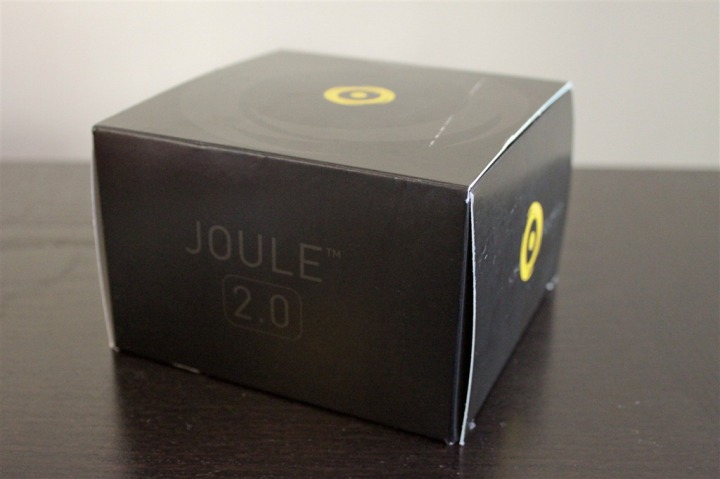
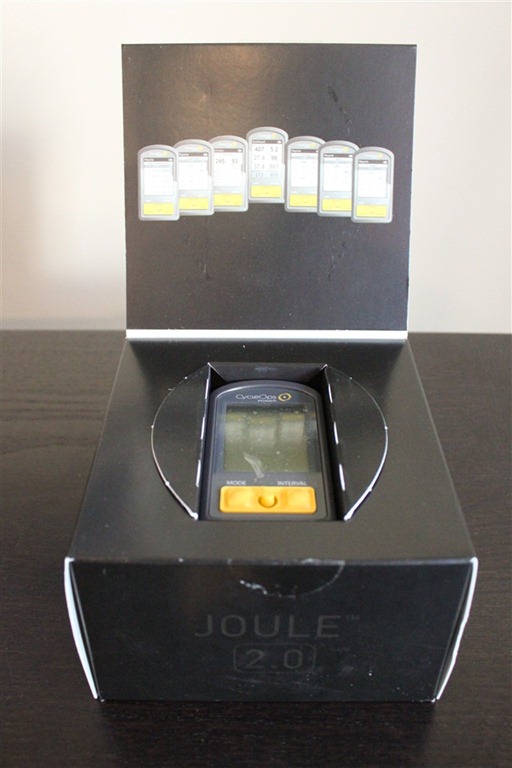
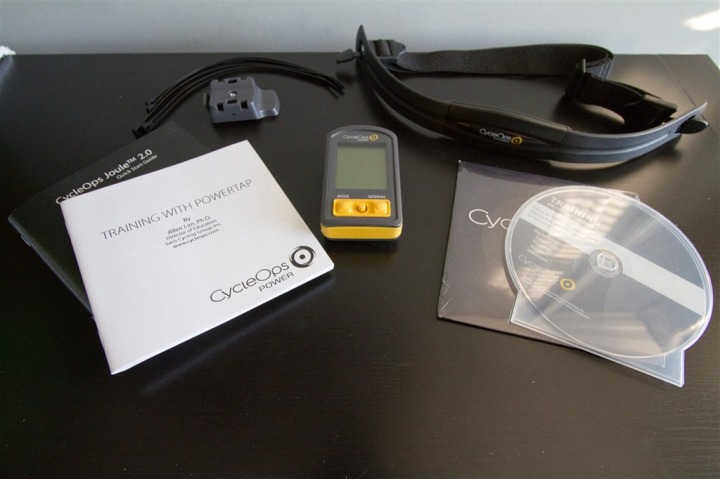
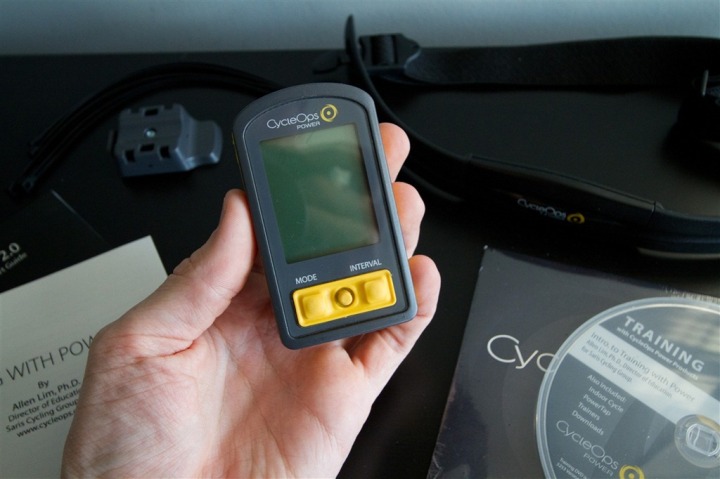
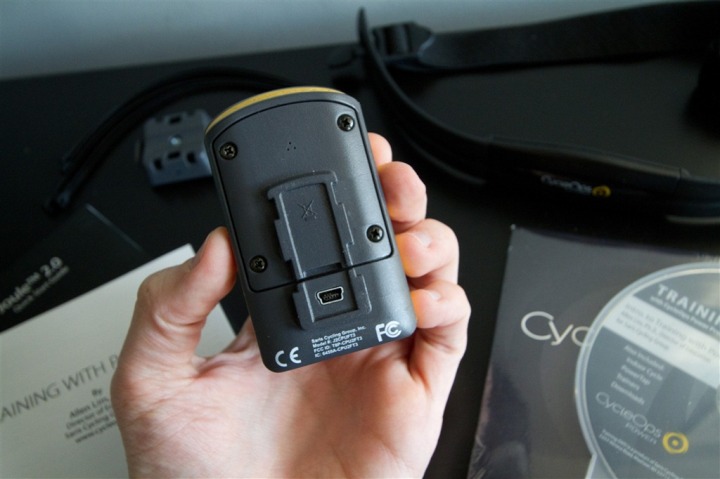
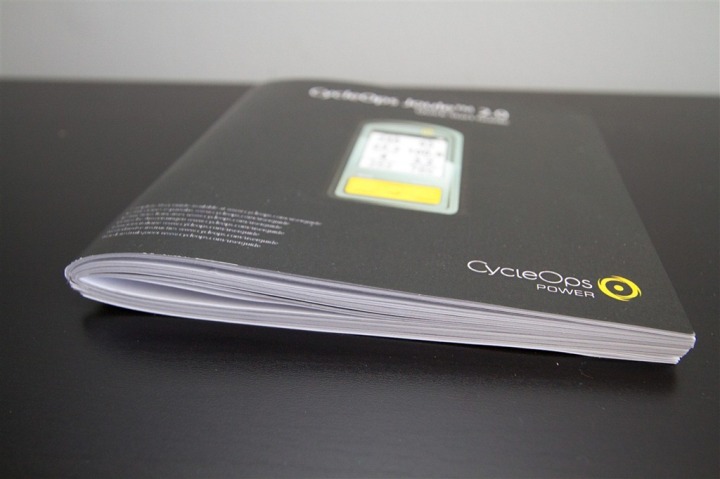
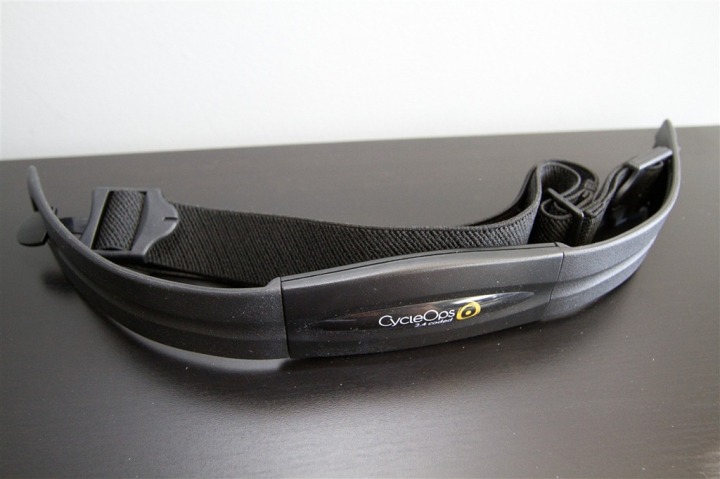
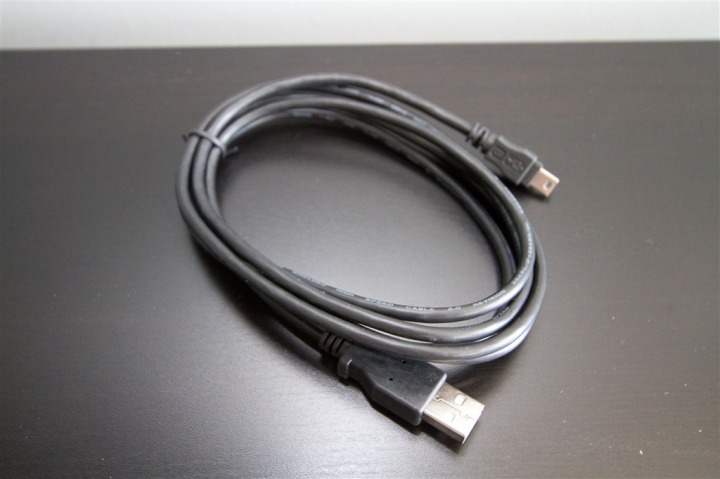
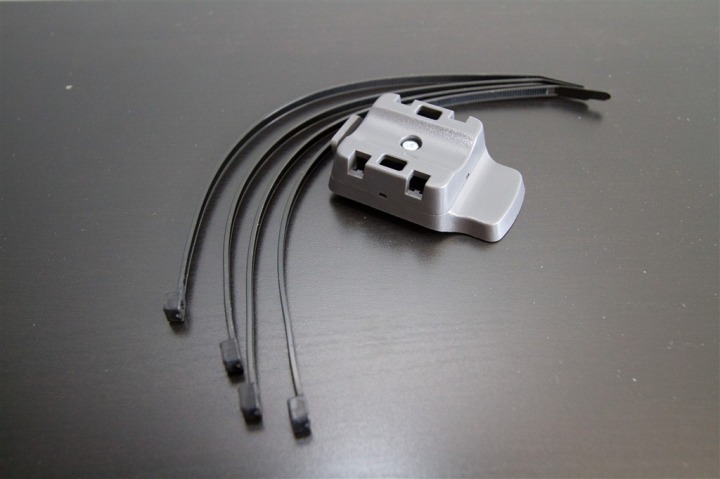
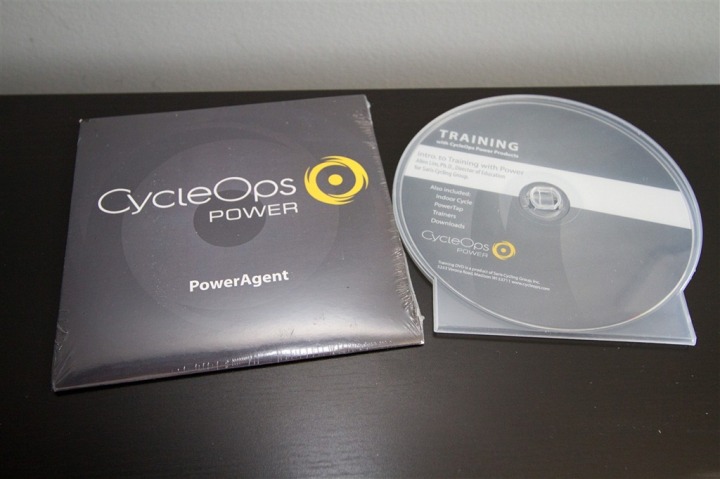
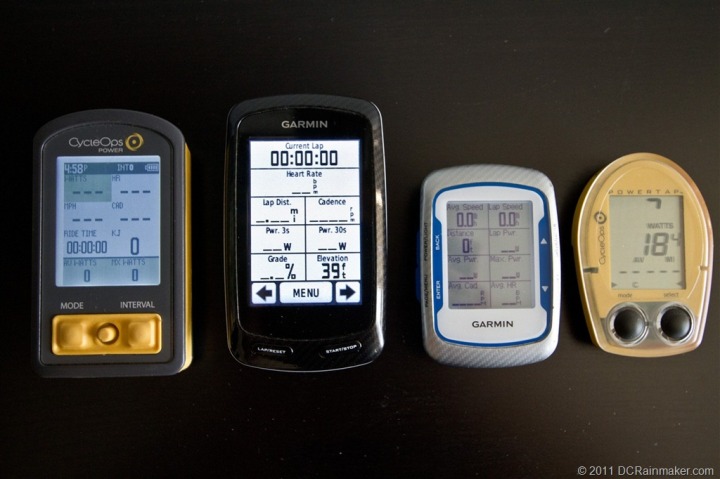
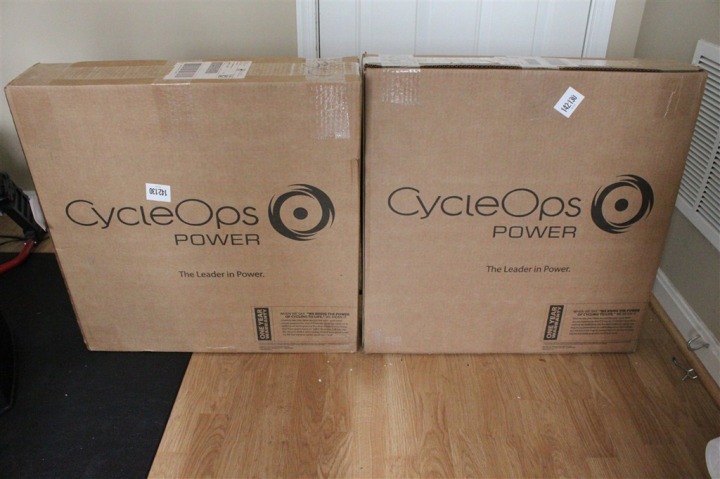
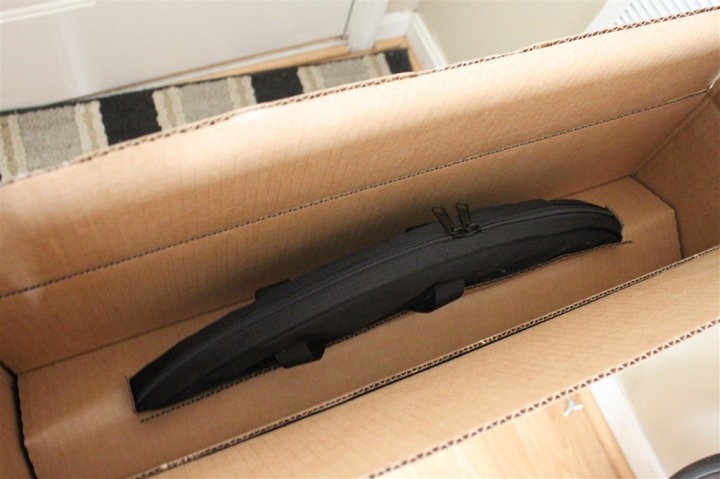
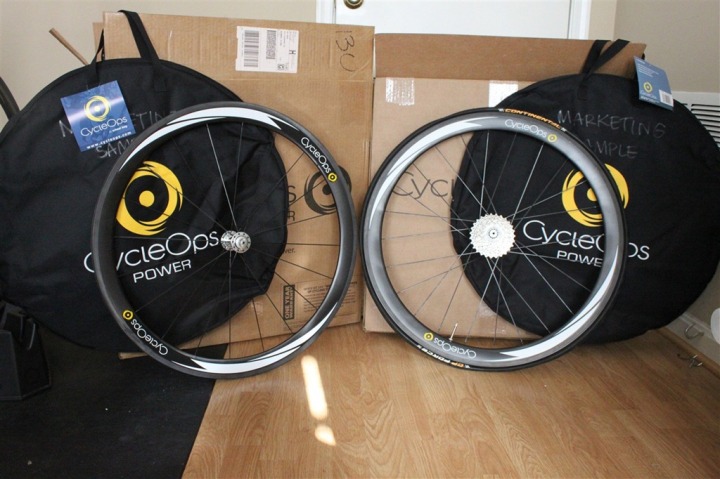
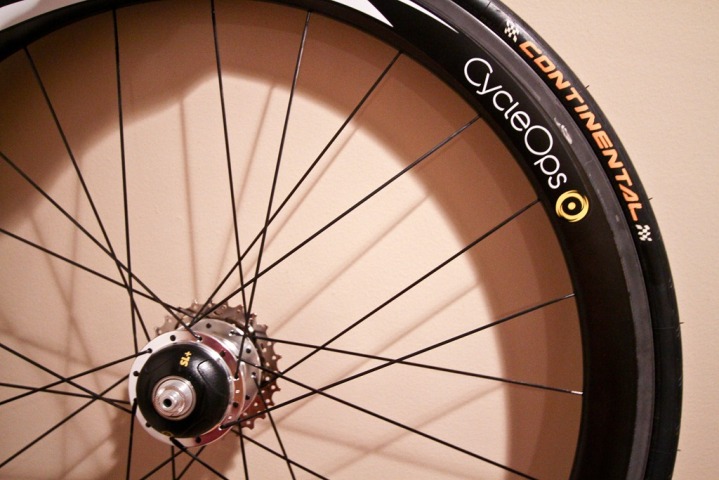
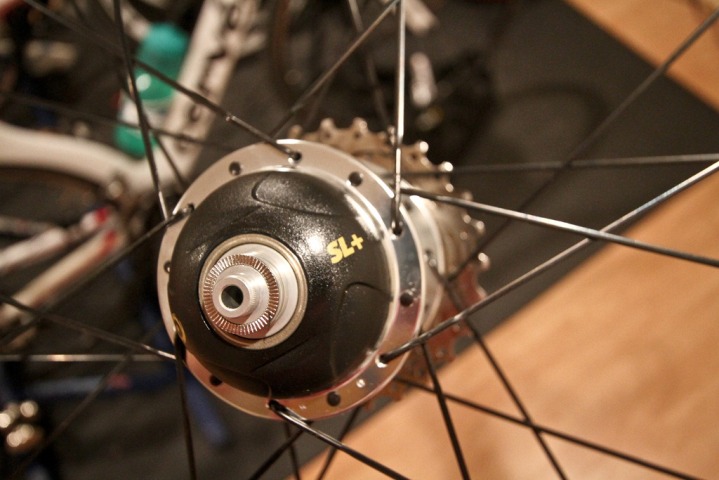
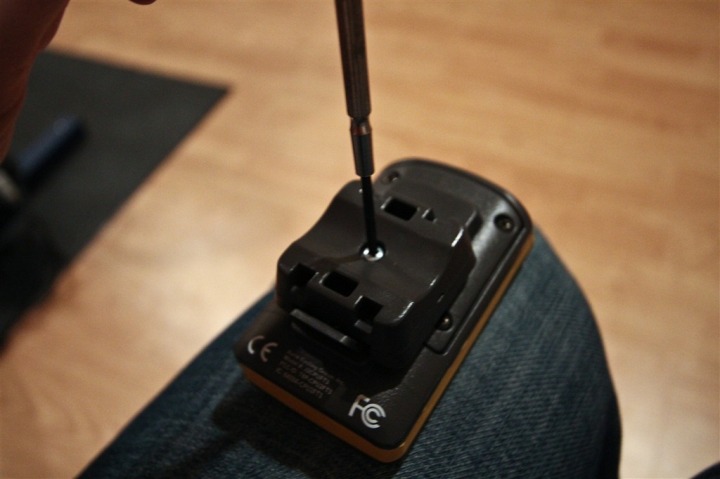
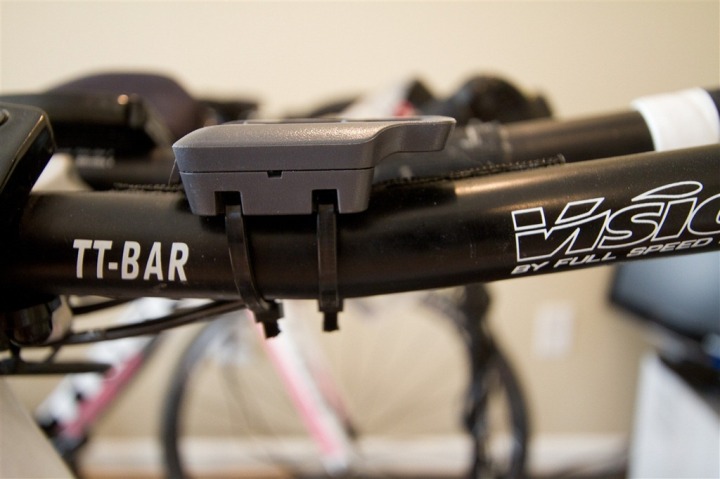
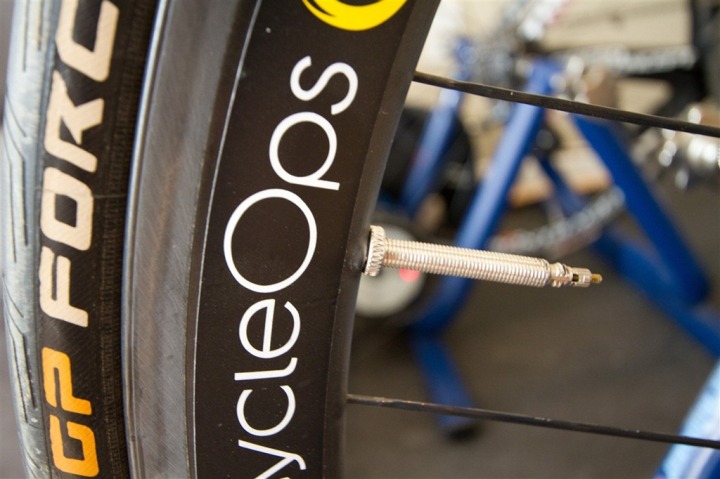
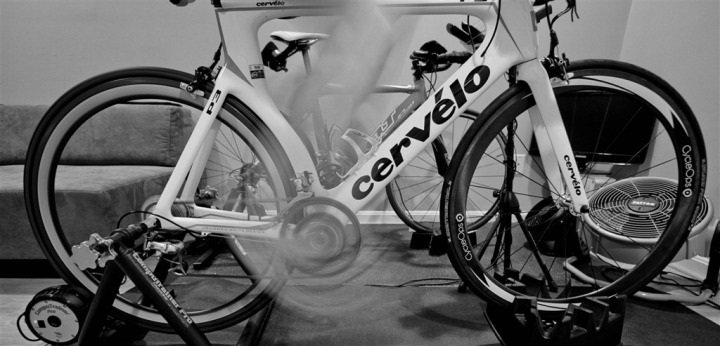
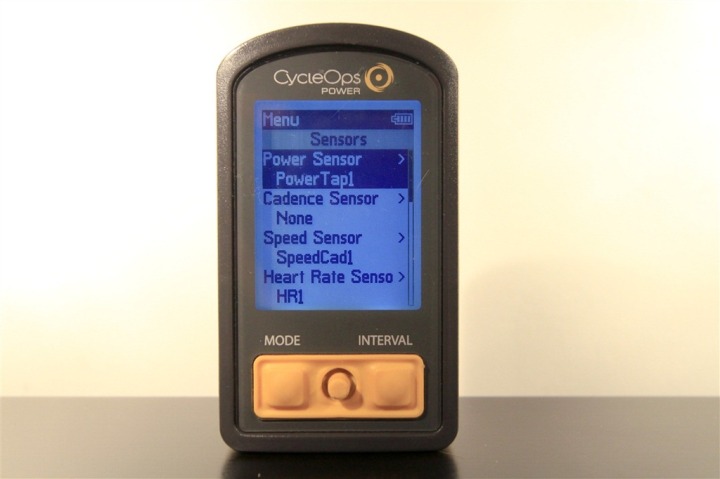
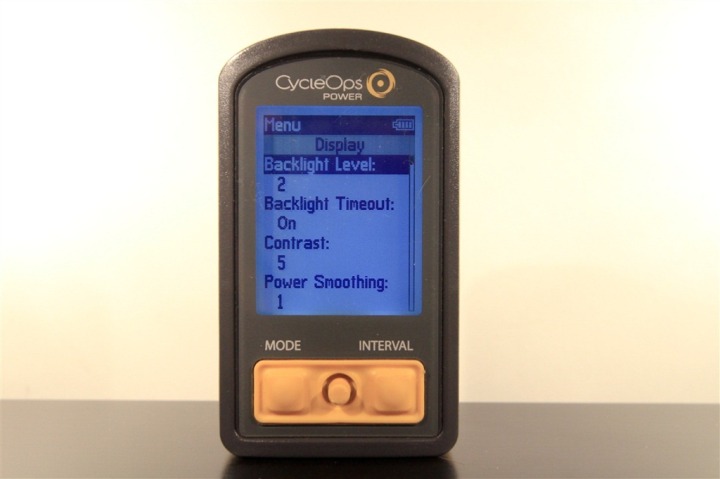
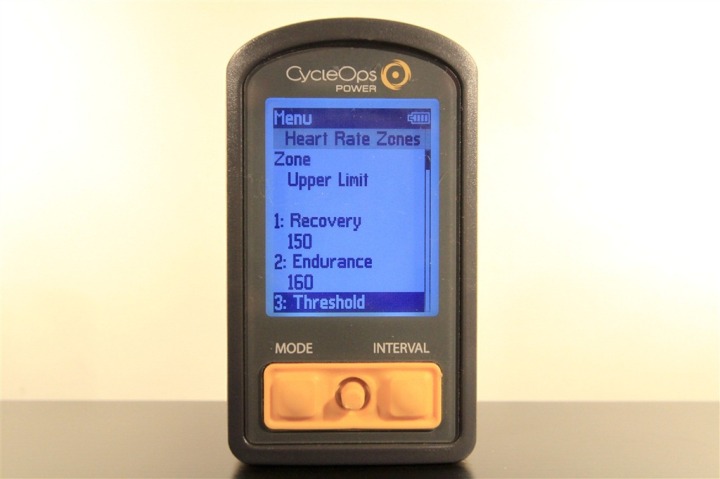
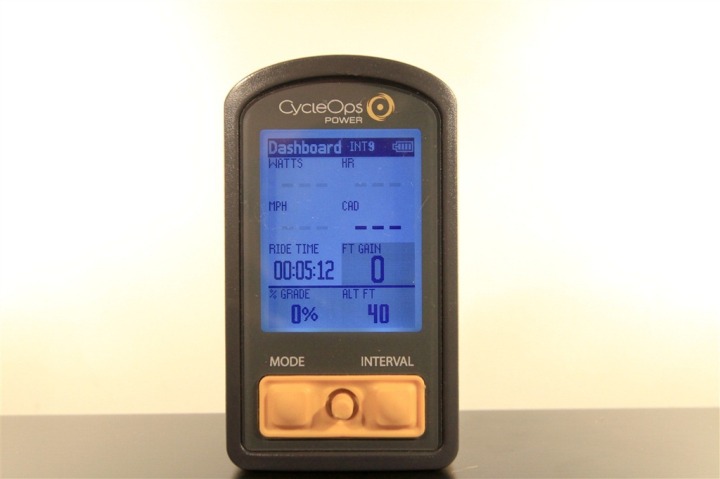
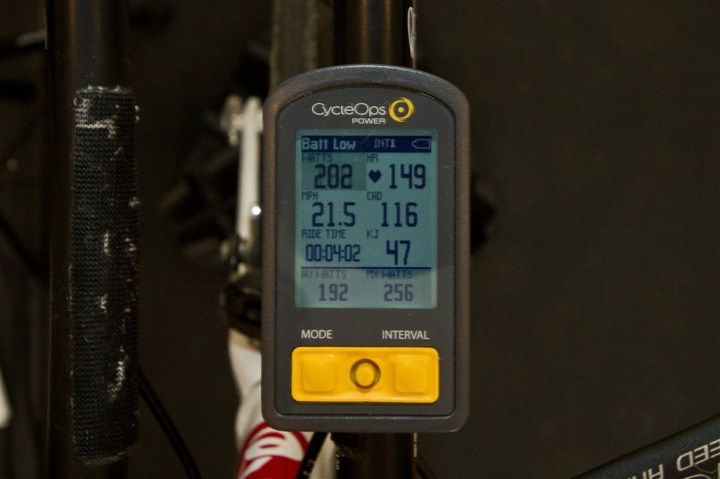
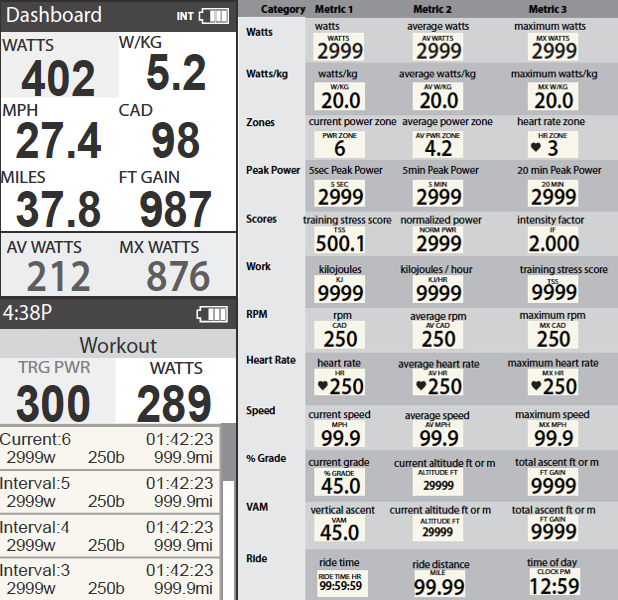
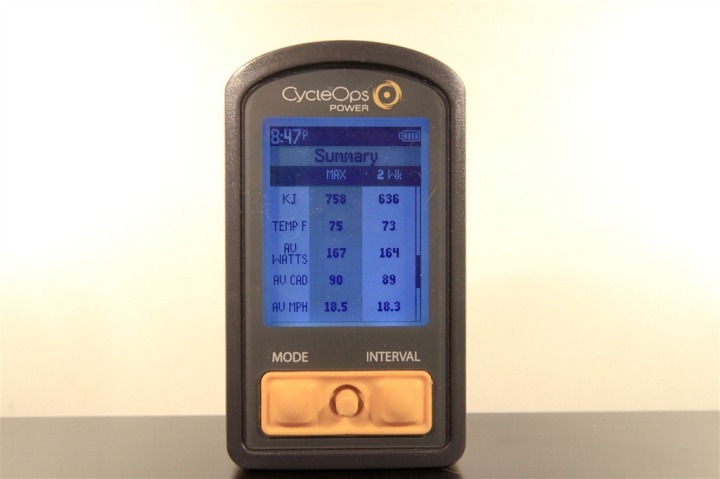
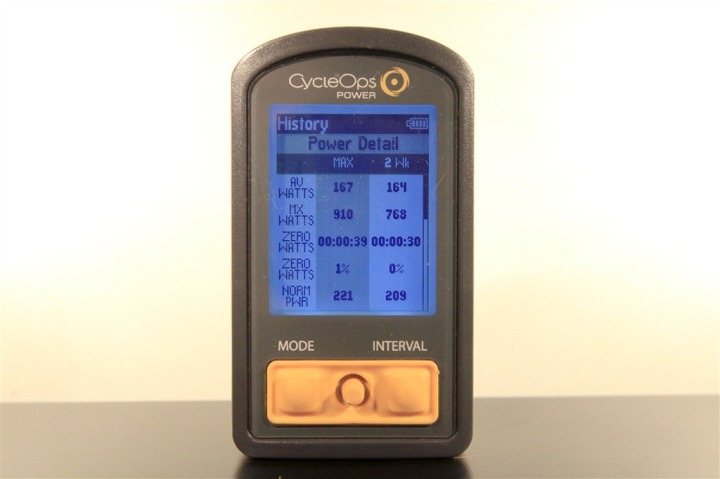
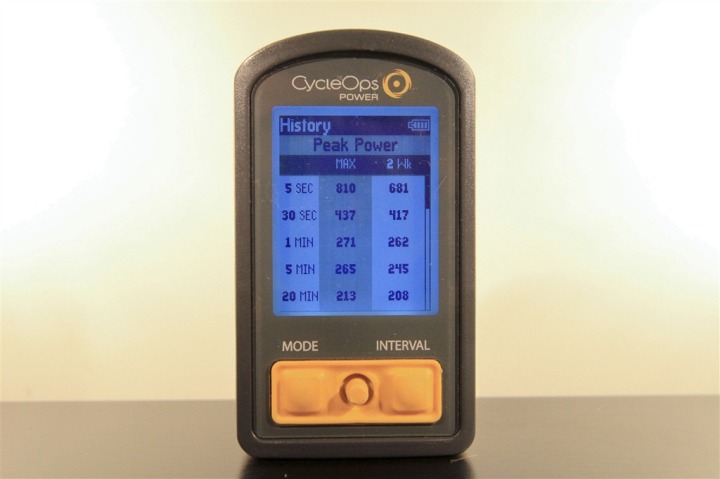
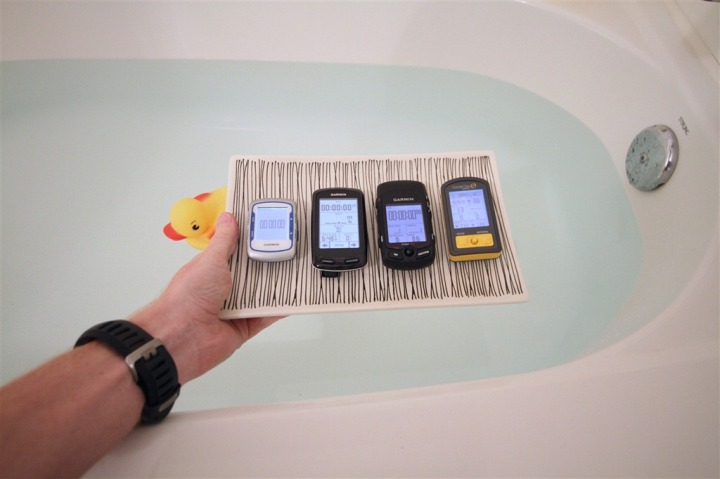
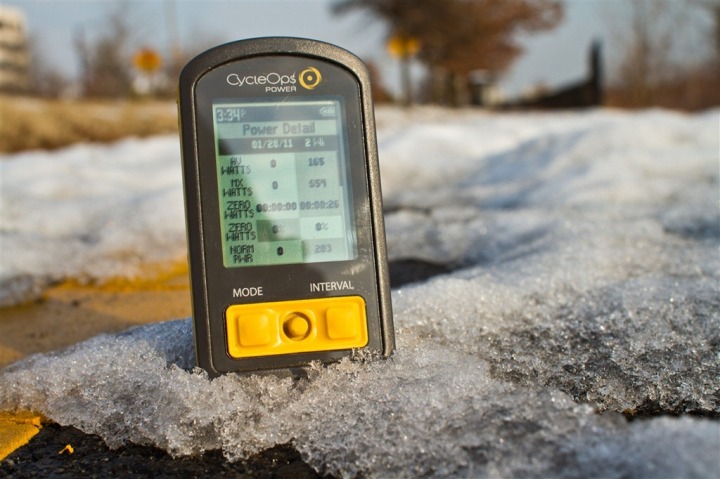
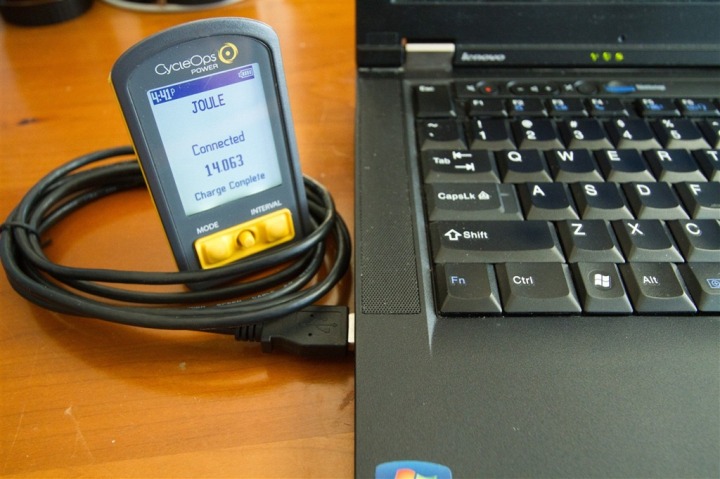
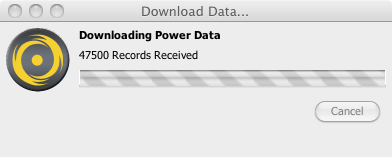
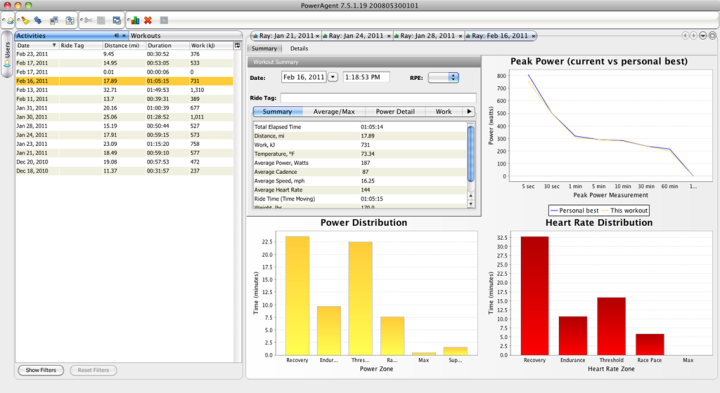
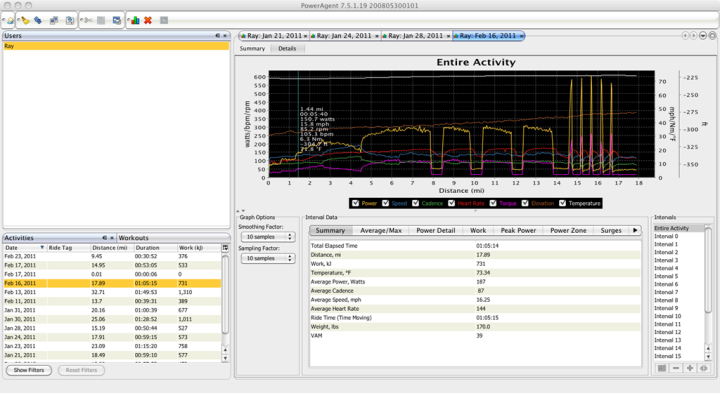
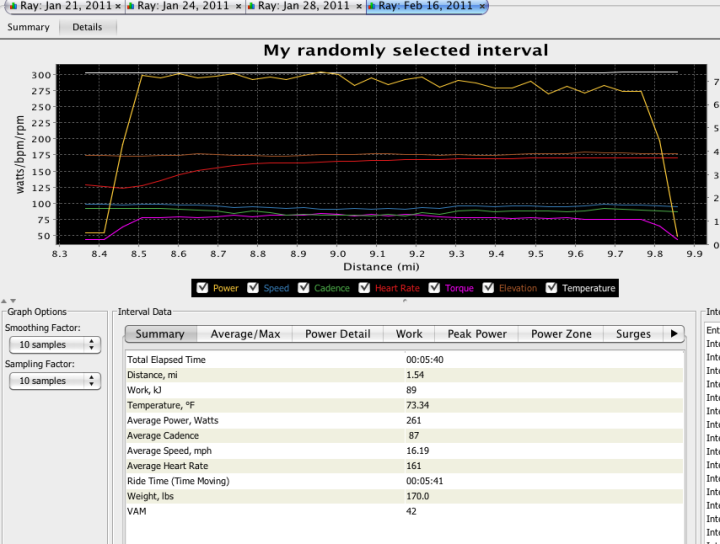
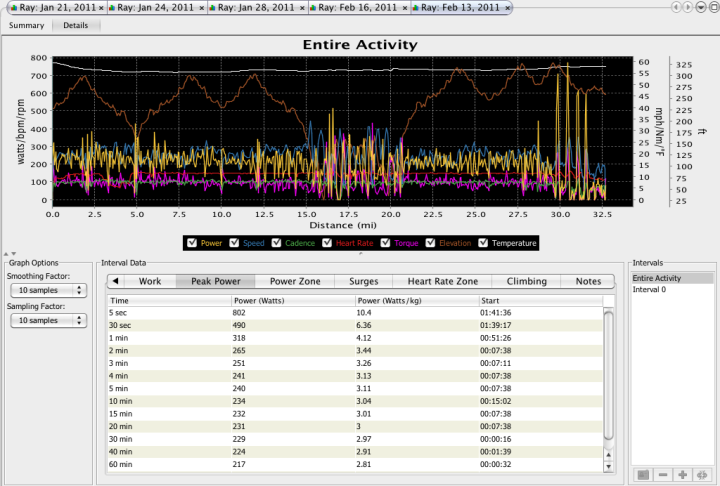


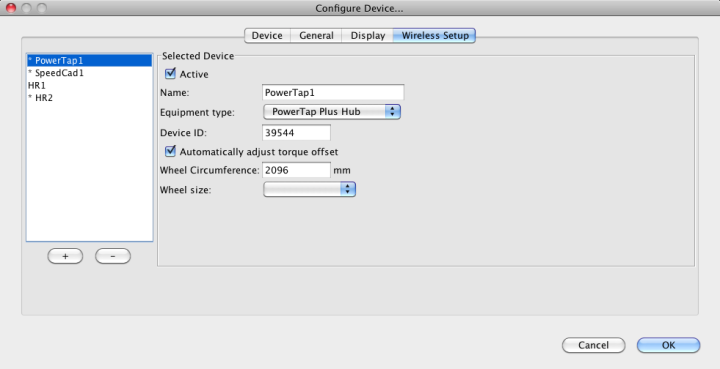
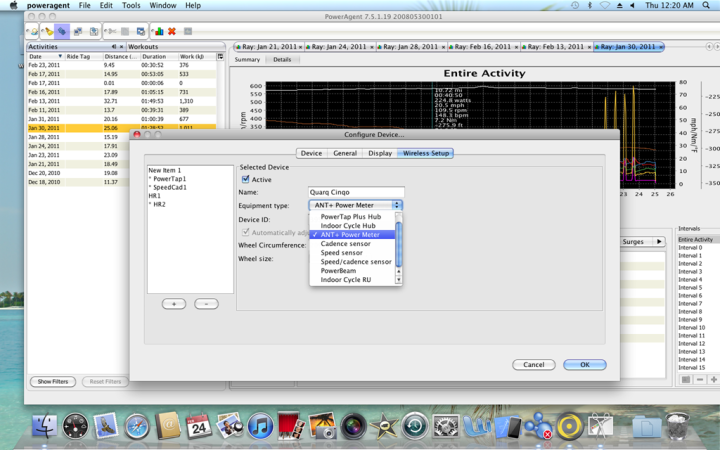
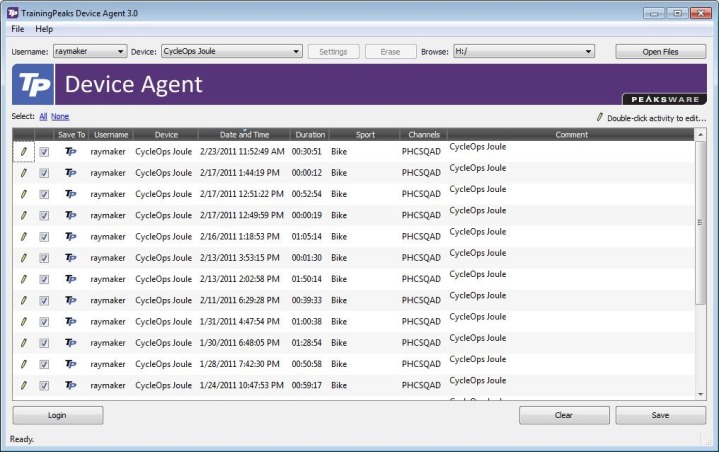
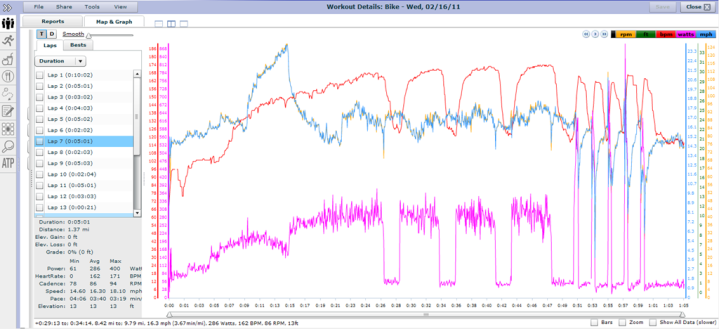
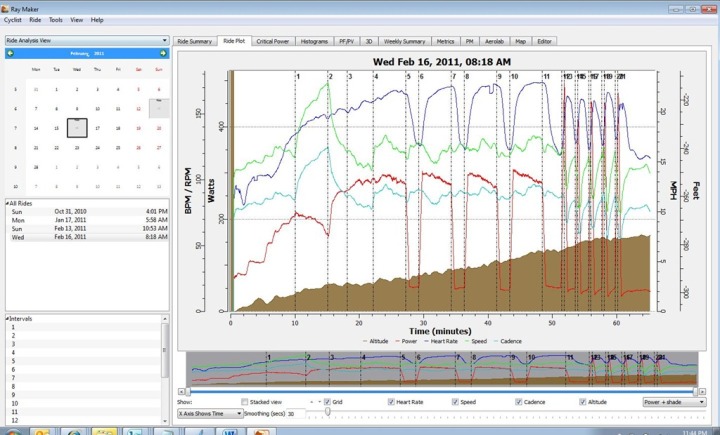
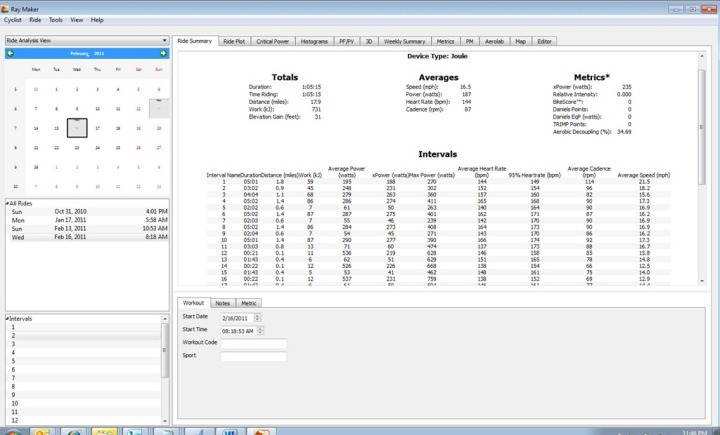
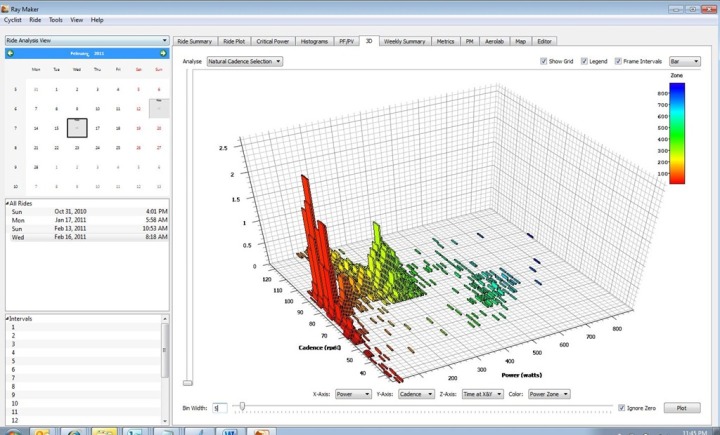






















Great writeup.
Great review like always. I just ordered my first Power Meter on monday. A Powertap SL+ w/ Joule. 😉
I think you should mention also at the end that even though the joule itself is quite expensive with ~$400 the combo of Hub+Joule is actually a very attractive price. I bought my set for $1300 new (Incl. heart rate strap). Considering that the Joule is $400, it’s ‘only’ $900 for a very high quality power meter. This combination made the most sense. Even though there are cheaper power meters out there they all dont come with such a great head unit.
Great review Ray.
The only thing I would point out is that KOVI no longer offers a Joule for the signup bonus. That has been changed to either a CycleOps SuperMagneto trainer, or a pair of Bont heat moldable shoes (model not specified).
Thx for the review.
I’ve read on another place that cadence is very inaccurate (+/- 10%), but that you can by an extra magnet whereby cadence is measured and not calculated.
Question: What are your thoughts on power accuracy? Do you have to calibrate/recalibrate the unit in order to receive best results? According to other tests I have read it is less accurate than SRM or power2max.
One small nit — those rims are Mavic Opens like my car is a Porsche. They look more like deep-Vs.
I guess anything below 45mm seems the same to a triathlete 😉
Nice review as usual Ray.
I stopped by to talk to the ANT+ guy (part of TI booth) at MWC in Barcelona last week, and told him I was an avid reader of your blog. He (sorry but I didn’t get his name) said he knew you and liked what you were doing.
Ray, your review was, as always, excellent and thorough.
In your Cons section you mentioned:
– PowerTap hub tied to a single wheelset – must pick either race or training wheels
While that is true, I own a second hub mounted on a Zipp wheel, and from the perspective of the Joule as opposed to the hub, the Joule makes the swap very simple.
@Batement – I have found cadence to be very consistent. I did, for a while, use an external cadence device and noticed no measurable difference between than and the calculated number coming off of the but. Consistency, for me at least, is the most important component.
Hi Andre-
RE: Price points
Good point, I’m looking to do a bit of a price comparison here shortly – either in this post, or something seperate.
Hi Dustin-
RE: Kovi Program
Ahh, bummer, that was an awesome deal…updated above.
Hi Bateman-
RE: Cadence
You can certainly add an external cadence sensor if you want to. In my experiance the calculated cadence is more than sufficient for the majority of items. I only noticed oddities in high cadence drills at about 150+ RPM’s where the consistancy would be a bit odd.
RE: Accuracy
I meant to show off some of the accuracy pieces but am looking for a better vehicle to do that. Indoors I ran it on a CompuTrainer and when I had it calibrated I was seeing nearly exact wattages (within 1-3w at 250w+). Very impressive. Have some photos I want to post on that at some point. In general the power meters out there on the market today in the ANT+ world are all rather accurate. The key is that they’re consistant.
Hi John-
RE: Wheels
🙂
Hi Mark-
RE: ANT+ Dude
Yup, I know Dallin and his team, good group of guys!
Hi Al!
RE: Wheel Swappage
Indeed, the Joule makes this very easy once you create the additional pairing. Also agree on your cadence comment.
Thanks all for stopping by!
Does the J2 have the ability to display Heart Rate as % of HRmax? I’ve looked, but cannot find the option.
This would be preferable, as it’s easier to remember, at least for me…
Rainman
A question on Cadence (and ANT in general) . Couldn’t you simply get a Garmin Speed & Cadence sensor and pair that with the Joule?
Does that ‘any-to-any’ pairing work well with ANT goodies in general.
As to the Joule – my main heartburn with it is it’s a one-trick pony – it only pairs with you bike with a PT hub. The on-meter features are nice – it would be good to see NP during a race for instance.
I have a Garmin 500 that works for all my needs – I can move it from a TT or road bike with a PT hub, cadence and GPS, to a MTB with no power, but cadence and GPS, to a Track bike, turn off the GPS and use just the Speed& cadence sensor. In a pinch, I can stick it my pocket and go for a run.
Hey there. Good review of the Joule. I synched mine with and ANT+ spec cadence unit – no ‘calculation’ there – just real, live numbers – so an easy fix for those looking for ultimate accuracy.
As usual, a great, informative review.
I’ve actually been thinking about a power meter for a while (to use with my 310XT), and the powertap seems like my best option.
However, am I the only one who can’t figure out how to order one of these?
On the cycleops website, I choose my model (Pro +) and then have to decide between a “hub only”, “hubset”, “wheel only”, or “wheel set”, in Shimano or Campy, with 20, 24, or 32 spokes!
May be a newbie question to ask, but what does all this mean?! Please help!
Having reviewed both, how would you say the Joule 2.0 and Garmin 500 compare to each other? I’ve owned the the Garmin 500, but need to replace it and was wondering if I should go with the same thing, or look at the Joule. Thanks!
You can jump on really good deals on the current CycleOps product line over on http://www.excelsports.com. I just ordered a wheelset for my wife.
Hi Maverick-
RE: HR %
None that I see. Sorry!
Hi John-
RE: Garmin Speed Sensor with Joule
Yup, absolutely.
Hi Ned-
Thanks!
Hi Mike-
RE: Ordering
I’d love to help ya there, but it would depend on your current wheelset. You can ring up CycleOps though and they’ll walk you through it pretty quickly. Super easy.
Hi Michael-
RE: Joule vs Edge 500
I’d way for the new Joule’s to come out, see this:
link to dcrainmaker.com
Thanks all, and sorry for the delay here – been a bit of a crazy few months with wedding and honeymoon, just getting a chance to catchup on all the past comments.
Great review.
Wonder if you have connected the PowerTap to your Garmin 310XT.
How would Garmin Connect store the wattage if you have experience on it ?
No problems connecting the FR310XT to a PowerTap, done without issue. Garmin Connect will see the power and display it in a chart similiar to cadence. Check out my FR310XT review to see how it works. Enjoy!
Hi there,
short question here in Europe they CO is promoting the Joule GPS which looks a lot like the Joule 2.0. Actually I was about to buy the Joule 2.0 but not so sure anymore since the Joule GPS is less expensive.
What are your thoughts on it?
Thanks
Alex
So what where your impressions of the wheelset? Carmichael Training Systems has a promotion going on for carbon wheelseet with a G3 hub. $2,199 and you can pay half down and half over the duration of a coaching contract. Not too shabby if the wheels are worth a…
It’s a nice wheelset, but honestly, I’m not a big wheel person. As long as its round, goes forward, and works – I’m happy.
Technology, now that’s entirely different!
As for the Joule GPS, it should be tomorrow’s post (full in-depth review). Enjoy!
Is it true that it could show power base by HR just like PowerCal but with normal HR strap?
Have you calibrate a PowerTab to a Garmin Edge 500 ? I trained with CompuTrainer, and my Powertab G3 is consistently having a lower power. On average, powertab G3 shows 13 – 16 W lower than CompuTrainer.
I read through another article here showing how to calibrate. You have any other suggestion ?
link to cyclepowermeters.com
Hi I’m having difficulty connecting the Joule 2.0 with Golden Cheetah. It is not able to detect the Joule. Any suggestions? Do I have to manually enter the device information?
Dear Gordon,
I was using poweragent on MAC, and switched to Golden Cheetah.
It doesn’t find my Joule 2.0, even after I made an attempt to install drivers.
I have to do manual export/import, which is kind of painful.
Have you found a solution?
Thanks
Aloha, was wondering…. in your opinion which Power Devise works best on a mountain bike…Stages, Power Tap etc……Really appreciate your take and unbiased opinions…mahalo
That’s a tough one, as I’m not too deep on mountain bikes. I talk very briefly to it in this post, but see the comments where a few folks chime in on the mountain bike side: link to dcrainmaker.com
In your review on the Speed/Cadence sensors, you said that the PowerTap “will generally” override the speed and cadence measurements coming from a Speed/Cadence sensor. But in a reply to John, 25th Feb 2011, you hinted that the Garmin will pick up the measurements from the dedicated device, rather than the PowerTap.
So the Garmin can be configured derive
* Heart rate from a HR sensor,
* Speed and Cadence from the Speed/Cadence sensor
* and Power from the PowerTap
I’m interested in buying the Edge 810 w/Performance Bundle and a PowerTap hub, I’d just like to know if I need the Performance Bundle.
It grabs speed from the sensor for display, but not recording (yes, it’s confusing. Your order is otherwise correct though (for override).
For you, I wouldn’t get the bundle. I’d just pickup the HR strap and call it a day. The PT will will provide speed (indoors, and/or tunnel/etc…), and the PT will also provide cadence which is generally good enough for most situations.
Enjoy!
Do you ever experience issues with a powertap on a trainer and does it matter if you have the trainer clamped down when calibrating? I have used a powertap for everything the past couple years and most of the time data, HR, PE all fall in line. However there have been times (only inside) where my power just seems to fall throughout the workout while effort remains the same. I can even confirm this through my computrainer. It seems to be related to how torque is transferred to the hub on a trainer. Thoughts?
Great review! Thanks for sharing all your experience here
I am waiting my V800 here in Italy in two days but already playing with the PolarFlow features.
Seems that the possibility to plan a phased target with race pace is missing?
-> What about 1 mile at 5:00 , than half mile at 5:30 repeated 5 times, I can choose only distance OR time combined with HR zone?
–> Do I need to setup 10 different targets using the Quick race pace functionality
I always had difficulties in reading data while running, the RCX5 had the possibility to select only 2 rows instead of the 4 in each individual display view so the characters are bigger but I did not see this in the V800 manual.
Thanks
R
How does PowerTap / Joule 2.0 arrive at %grade? I can see imagine a simple algorithm for computing cadence, but I’m perplexed how Joule arrives at grade. Does it detect some force distribution across the pedaling stroke that varies with grade (maybe factoring in speed change) – a distribution that wind resistance/wind gusts cannot mimic?
Superb site that I’ve told an inventor about. You’ll appreciate what he’s trying to develop, and hopefully you’ll hear from him down the road – for everyone’s benefit.
Most devices simply look at elevation gain (barometric altimeter) and then look at a trailing distance (i.e. the last 10 seconds) and calculate how long it took you to gain X feet in Y distance. Thus…grade.
Great review. I have found out the hard way that the J2 only works with a power tap! Now I have to go buy a Garmin for my race wheels!!!
Hey Ray have you ever had any problems with the bearings in your powertap. I wanted to buy one but I have heard that their bearings are poor and need to be replaced frequently. Also have you ever tried their alloy wheels? If so what do you think of them?
I’ve hard mostly the carbon variants, but no problems with bearings at all. And honestly, I haven’t heard much as far as bearings either in any recent models (last 3-4 years worth anyway). I’d have zero reservations about purchasing another set (I already own two PT hubs).
Thanks. One last question, what would you suggest for a spoke count?
That unfortunately gets into the non-tech side where I explain I have no idea at all and just stare blankly at you and blink. Sorry!
Hi there
I have purchased some Zipp 404 wheels et with Cycleops power tap meter. How do I pair thus to my Garmin 500 computer? Where do I find the serial number of the wheel hub meter to input into my Garmin Power/ANT set up?
I assume my Garmin can pick cadence up from this wheel hub too?
Thanks
Best Keith
Hey Ray,
i can get a “new” Powertap pro Wheelset. What did you think about it? To old oder still good for training? It´s really not use since production. Only lying around in the shop. Cost about 400 Euro. Thanks for your reply.
Best regards
Steffen
If it doesn’t do ANT+ or BLE, I’d probably shy away from it at this point. Since nothing would support it. But if that wheel-set does, then it’s a great deal (just depends on how long it was lying around).